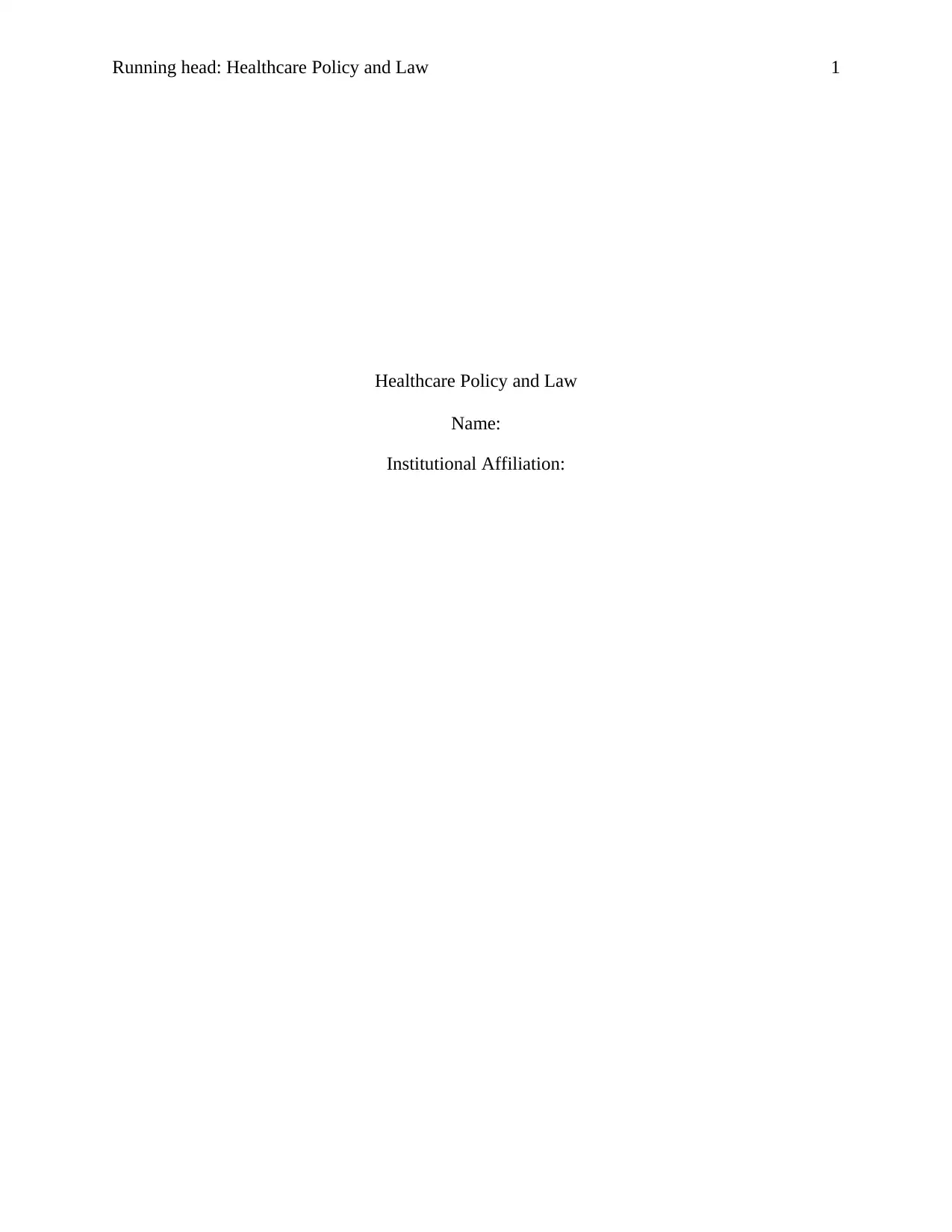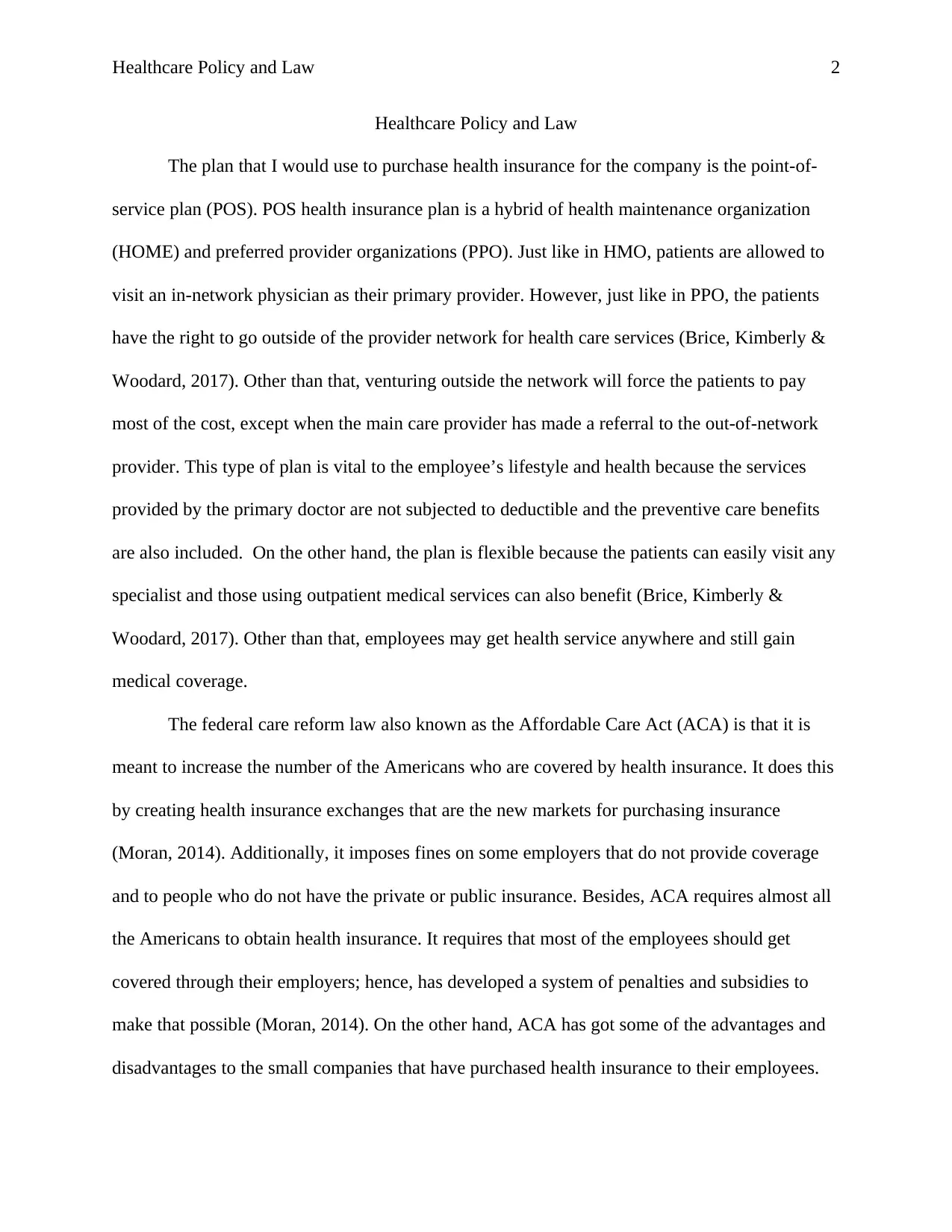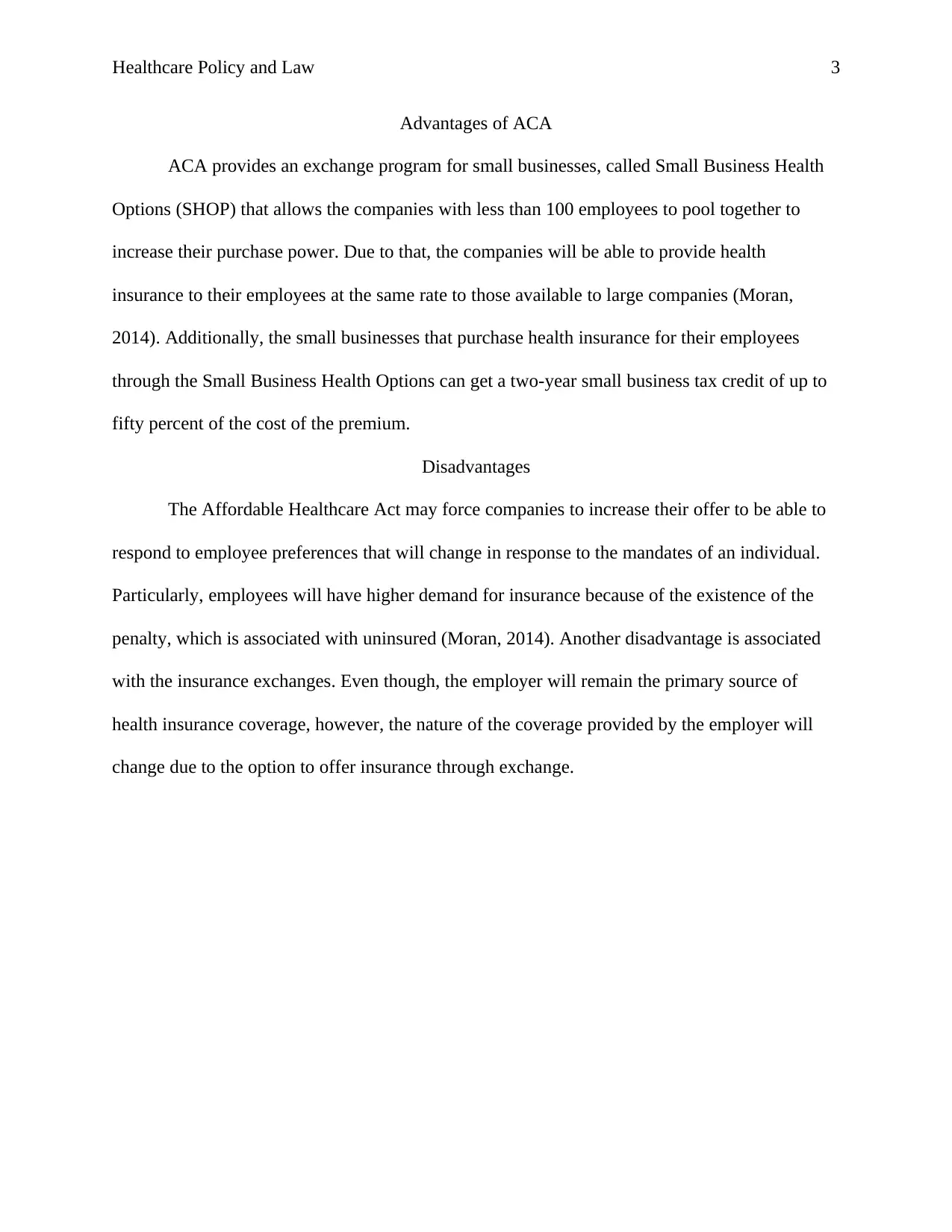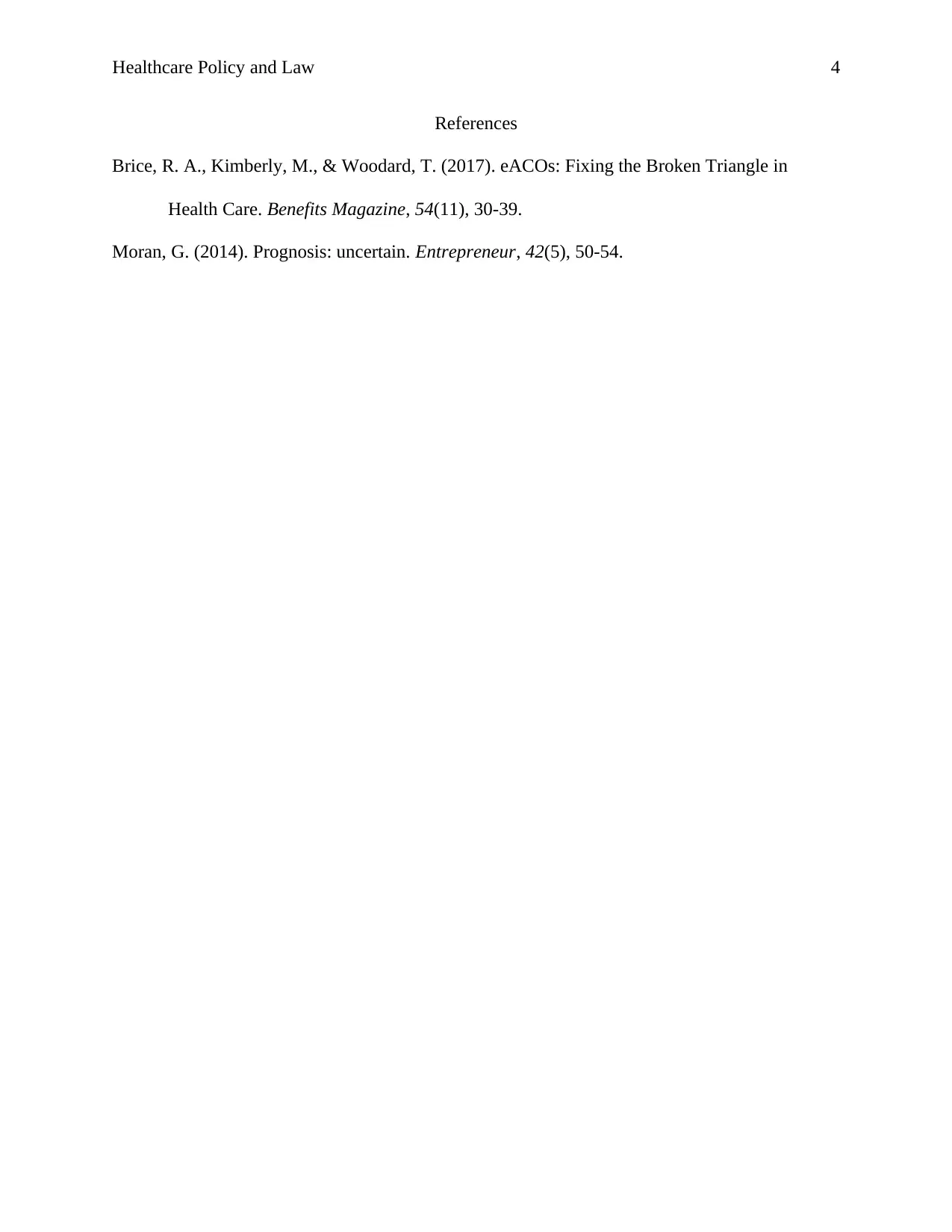Impact of the Affordable Care Act on Health Insurance Decisions
VerifiedAdded on 2023/06/11
|4
|681
|123
Report
AI Summary
This report analyzes health insurance options for an organization with fifty employees, focusing on the point-of-service (POS) plan. It explores how employee lifestyle choices and health economics influence the selection of a suitable health insurance plan. The report also examines the implications of the Affordable Care Act (ACA), including its advantages and disadvantages for small businesses. Advantages include access to the Small Business Health Options (SHOP) exchange and potential tax credits, while disadvantages involve increased demand for insurance and changes in employer-provided coverage due to the availability of insurance exchanges. The analysis includes references to relevant research on eACOs and the ACA's impact on entrepreneurship.
1 out of 4










![[object Object]](/_next/static/media/star-bottom.7253800d.svg)